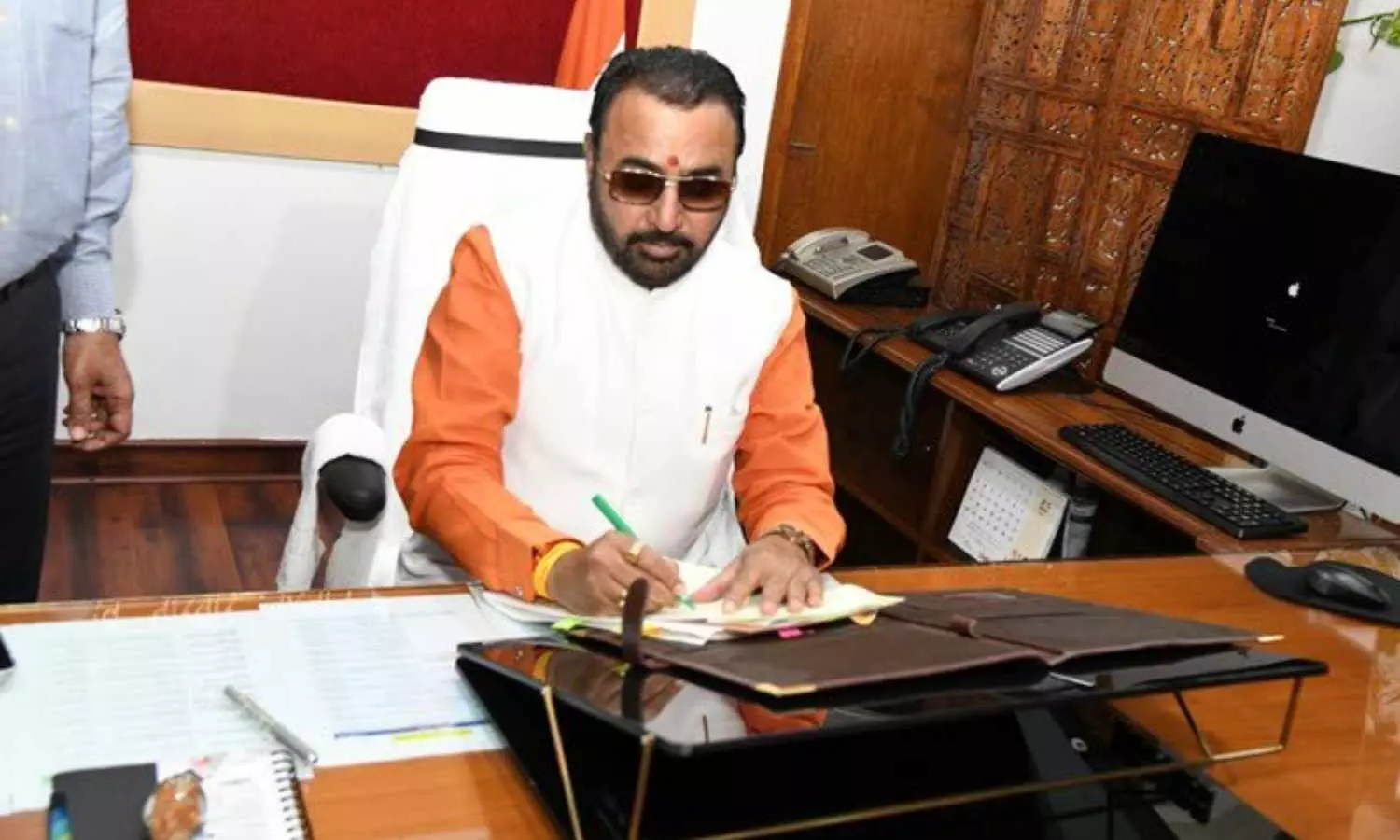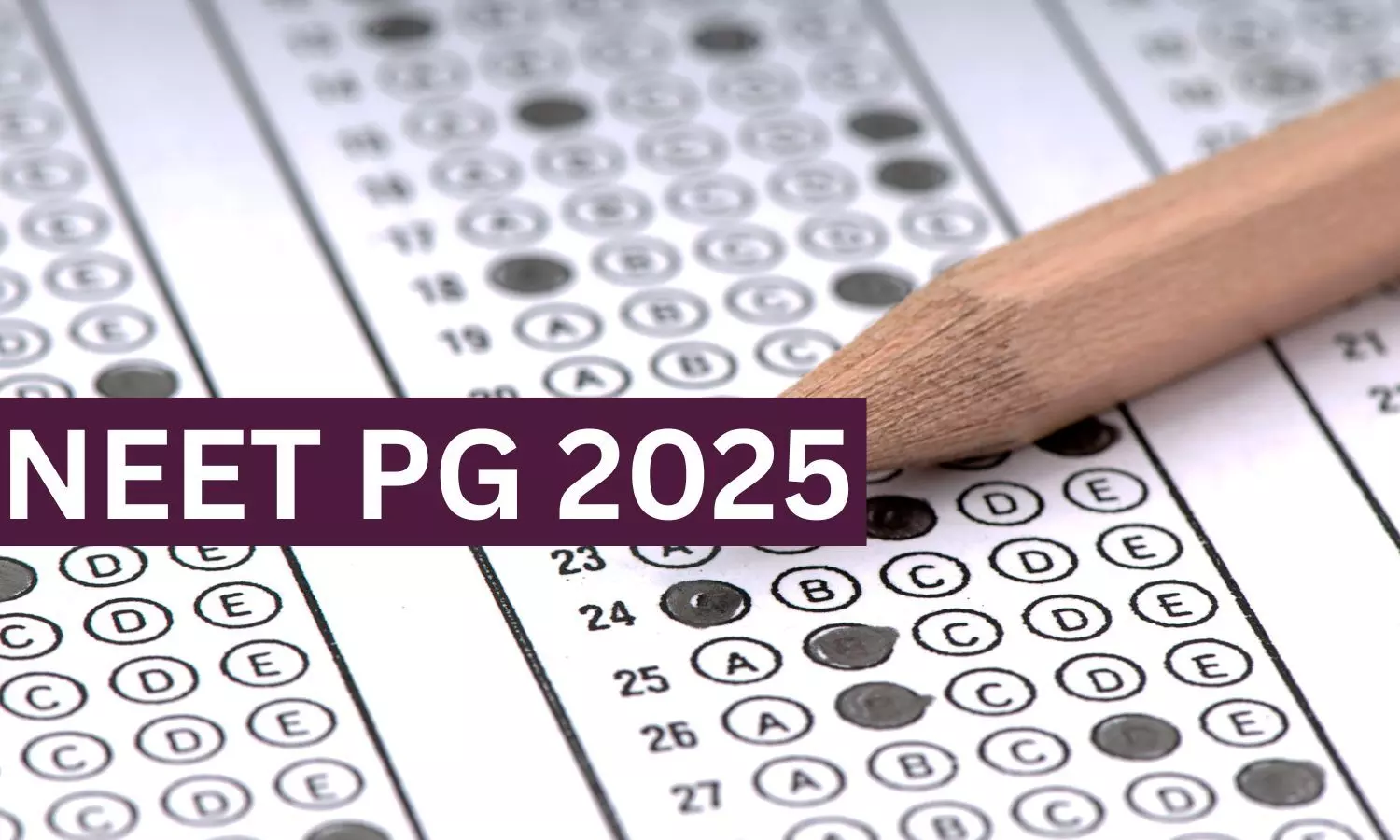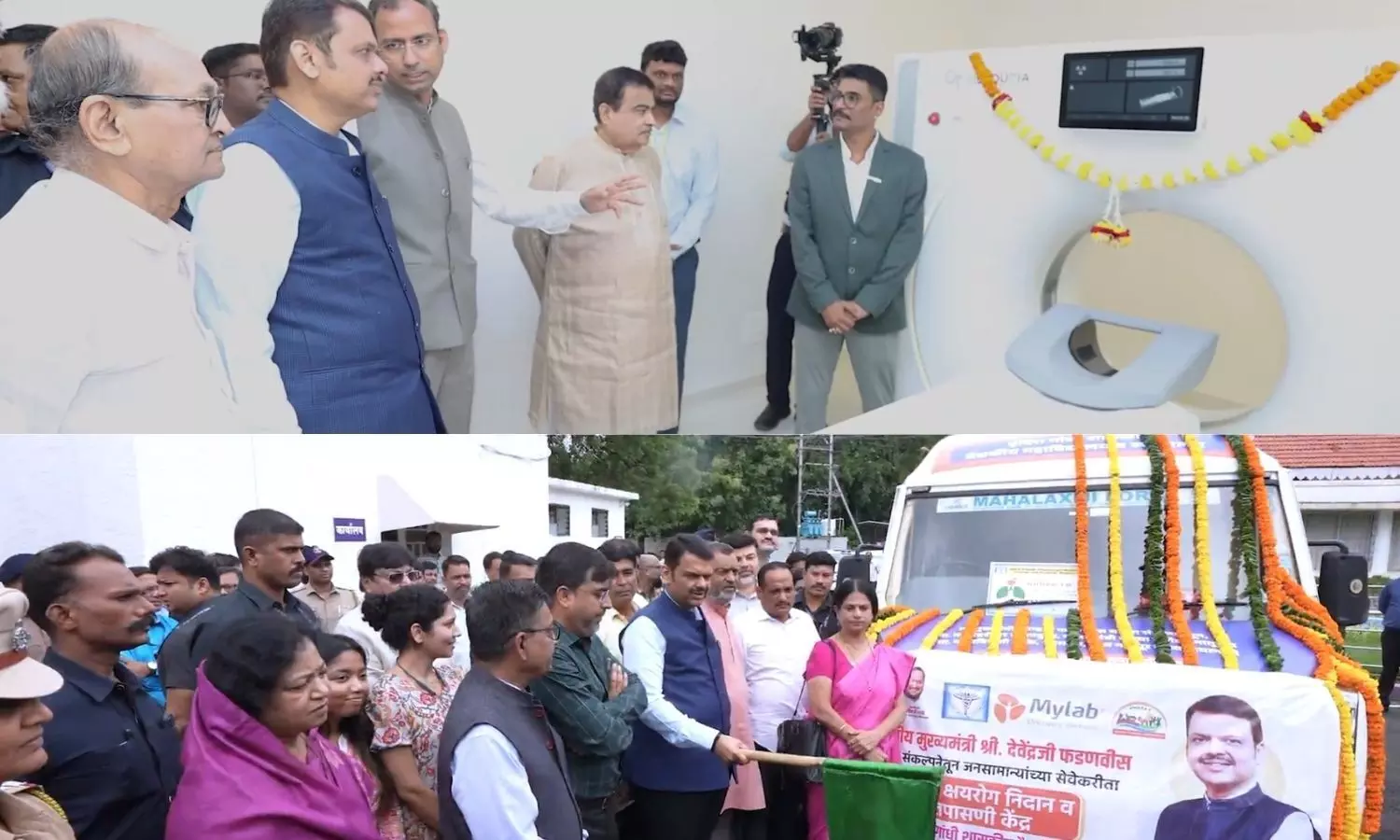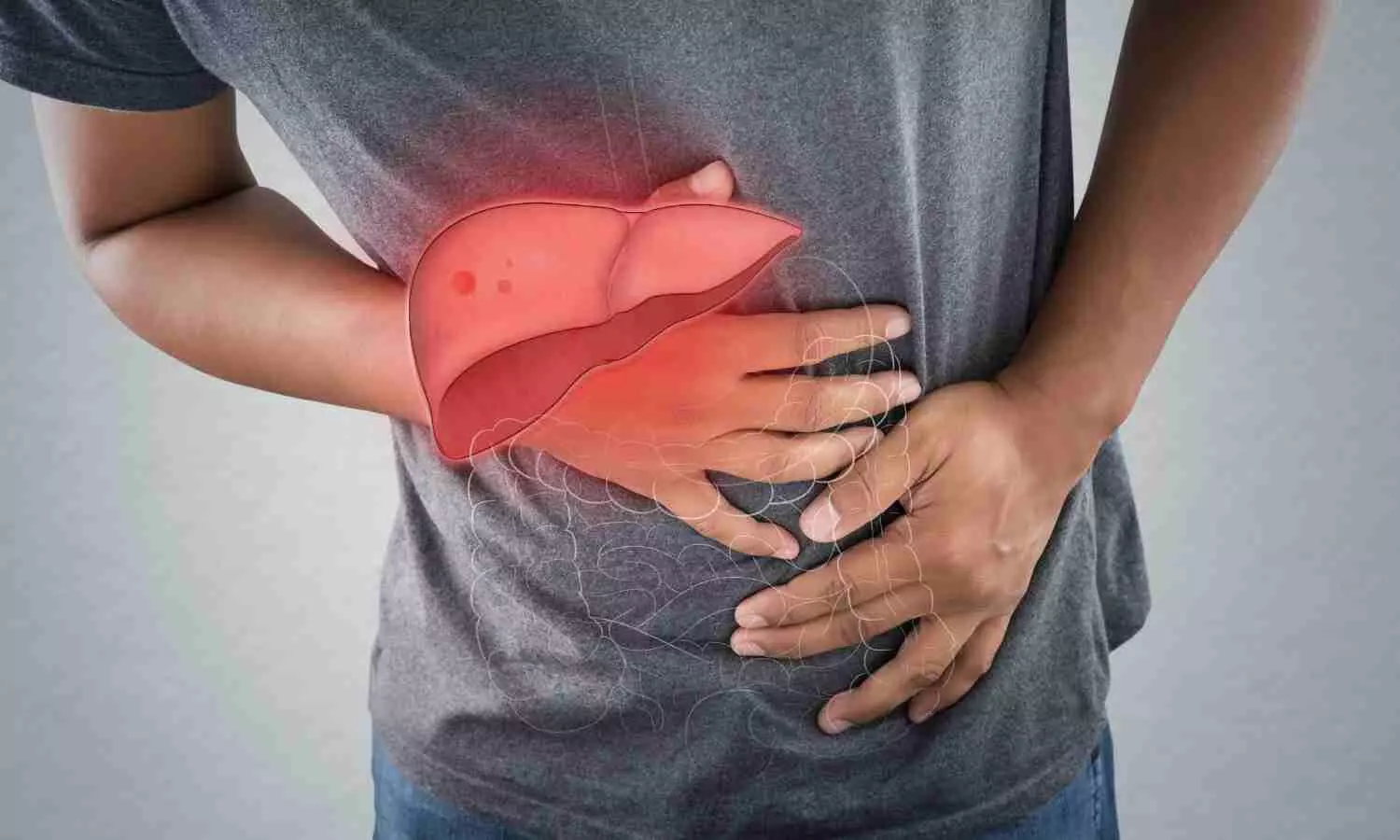UK teens who currently vape as likely to start smoking as their peers in the 1970s, study suggests
Powered by WPeMatico
Powered by WPeMatico

Sitapur: There is no proposal at present to establish an All India Institute of Medical Sciences (AIIMS) in Sitapur district, Uttar Pradesh, under the current phase of the Pradhan Mantri Swasthya Suraksha Yojana (PMSSY), informed the Minister of State for Health and Family Welfare, Shri Pratap Rao Jadhav, during a recent Lok Sabha session.
To date, under PMSSY, the Government of India has approved the establishment of 22 All India Institutes of Medical Sciences (AIIMS) across the country. Uttar Pradesh is home to two of these premier institutions: AIIMS Raebareli and AIIMS Gorakhpur. Both of these institutes are fully functional and are providing world-class medical care while also contributing to the training of future healthcare professionals.
The Minister was responding to the questions raised by Shri Rakesh Rathore about whether the Government is aware that Sitapur district in Uttar Pradesh is extremely backward in terms of healthcare services and that patients have to travel to Lucknow or Delhi for treatment of serious illnesses.
Also Read: Health Minister details Cancer Prevention, Screening Initiatives amid Rising cases
He asked if so, the details thereof,
He also asked whether the Government is considering setting up an All India Institute of Medical Sciences (AIIMS) in Sitapur, where sufficient land is also available.
He seeks to know if so, the details thereof, and if not, the reasons therefor;
He asked whether the Government proposes to formulate any action plan in the future for the establishment of AIIMS in Sitapur, keeping in view the healthcare needs of the people of Sitapur and nearby districts; and
Furthermore, he inquired if so, the details thereof?
Shri Pratap Rao Jadhav informed the Lok Sabha that under Pradhan Mantri Swasthya Suraksha Yojana (PMSSY), to date, establishment of 22 All India Institute of Medical Sciences (AIIMS) has been approved in various States/UTs in the country, including 2 AIIMS in Uttar Pradesh, one at Raebareli and the other at Gorakhpur. Both Institutes are functional.
Under another component of the PMSSY scheme, in the State of Uttar Pradesh, upgradation of 11 Government Medical Colleges (GMC) has been undertaken on Centre-State cost-sharing basis by way of setting up super-speciality facilities. These include (1) SGPGIMS, Lucknow, (2) Trauma Centre in IMS, BHU, Varanasi, (3) Jawaharlal Nehru Medical College, Aligarh Muslim University, Aligarh, (4) Govt. Medical College, Jhansi (5) BRD Medical College, Gorakhpur (6) MLN Medical College, Allahabad (7) LLRM Medical College, Meerut (8) Government Medical College, Agra (9) Government Medical College, Kanpur (10) Super Speciality Block, Institute of Medical Sciences (IMS), BHU, Varanasi (11) Regional Institute of Ophthalmology, IMS, BHU, Varanasi. In the current phase of PMSSY, there is no proposal for the establishment of a new AIIMS in Sitapur, further stated the minister.
Powered by WPeMatico
Powered by WPeMatico

New Delhi: In a recent case of robbery, a city-based woman doctor sustained a hip fracture while fighting off bike-borne snatchers who robbed her of two gold chains in southwest Delhi’s Safdarjung Enclave area, an official said on Tuesday.
An 81-year-old woman doctor was injured after bike-borne snatchers robbed her of two gold chains in southwest Delhi’s Safdarjung Enclave area, an official said on Tuesday.
The incident took place on July 25 around 3 pm when the victim, identified as Dr Sushila, a resident of Munirka, had gone to Safdarjung Enclave for some personal work, he said.
“While returning to her car, she saw a box kept near it. While she tried to remove it, two men on a motorcycle suddenly appeared. One of the accused snatched two gold chains from her neck,” a senior police officer said, according to a PTI news report.
Also Read:Doctor Robbed at Gunpoint in Punjab
The sudden jerk caused the elderly doctor who runs a clinic in Sarojini Nagar Market to lose balance and fall, resulting in injuries to her. The accused fled the spot immediately after the incident.
Speaking to HT, deputy commissioner of police (southwest) Amit Goel said, ”We have registered a case and our teams are scanning CCTV cameras to identify the accused. They will be caught soon”.
Police registered a case of robbery on July 26 based on the victim’s statement. Police are scanning CCTV footage from nearby areas to identify and apprehend the culprits. Further investigation is underway.
Medical Dialogues had earlier reported that in a well-planned heist, three women, including a 27-year-old law student, had been arrested for allegedly stealing Rs 30 lakh in cash and a mobile phone from a doctor’s house in northwest Delhi. The theft was committed just two days after one of the accused joined the household as a live-in maid using a fake identity.
Also Read:Patiala doctor held at gunpoint, robbed of Rs 1.83 lakh
Powered by WPeMatico

New Delhi- The National Board of Examinations in Medical Sciences (NBEMS) is going to conduct the National Eligibility and Entrance Test-Postgraduate (NEET PG) Exam on August 3rd for the academic year 2025. In this regard, candidates who are appearing for the exam must be aware of dos and don’ts for the said exam.
As per the NEET PG 2025 exam Information Bulletin released by the NBEMS in this regard, if during the course/of training/examination, a candidate is found indulging in any of the following, he/she shall be deemed to have used unfair means.
1 If a candidate is found to have made a wrong statement in his/her application form for appearance in the examinations /counseling /admission to the training or has attempted to secure or has secured admission to any of the examinations/courses of NBEMS or has obtained registration with any medical council, by making a false statement or by production of a false/forged document.
2 If at any stage a candidate has tampered with any entry in the certificate or statement of marks or any certificate issued by any governmental or nongovernmental body or any other document that has been issued to him/ her by NBEMS.
3 Use/possession of any kind of electronic gadgets, including mobile phones with or without internet (whether the gadgets are actually used or not).
4 A candidate found copying from notes written on any part of his/her clothing, body, desk or table or instrument like setsquares, protractors, scales etc. or who is found guilty of concealing, disfiguring, rendering illegible, swallowing or destroying any notes or papers or material found with him/her or found exchanging answer book or question paper with solution or talking to a person or consulting notes or books outside the Examination Hall, while going to the toilet or in the toilet.
5 Giving or receiving assistance directly or indirectly of any kind or attempting to do so.
6 Having in possession of any notebook (s) or notes or chits or any other unauthorised material concerning the subject of the examination paper.
7 Change of seat/system without the permission of Examination Superintendent/ In charge of Computer Laboratory.
8 Contacting or communicating or trying to do so with any person, other than the Examination Staff, during the examination time in the examination centre/ Computer Laboratory.
9 Consulting notes, books or any other material or outside person while going out of the examination hall/Computer Laboratory to the toilet or to any other place.
10 Impersonation.
11 Forgery in photo identification produced to seek entry in the test centre / producing false documents for the purpose.
12 Using or attempting to use any other undesirable method or means in connection with the examination.
13 Running away or swallowing or destroying any note or paper,, or material found with him/her.
14 Threatening any of the officials connected with the conduct of the examinations or threatening any of the candidates.
15 Peeping into the computer monitor screen of the other candidate.
16 Disclosing his/her identity or making a distinctive mark in the answer book for that purpose, or failing to deliver his/her answer book/continuation sheet before leaving the examination hall.
17 Hacking or attempting to hack or causing interference with the website of NBEMS or its Technology Partner(s) or their Information Technology systems.
18 Tampering with Information Technology systems of NBEMS or Technology Partner(s) or Computer Laboratory.
19 Damaging the computer systems of Computer Laboratory.
20 Candidate found to have attempted or trying to attempt personally or through another person to influence or pressurize an examiner, or any officer or official connected with the examinations of the NBEMS or its technology partner, either at NBEMS or at the office of technology partner or their respective residence(s), in any matter concerned with the examinations.
21 Any candidate violating the NDA will be treated as UMC.
22 If at any stage it is found that the candidate has appeared multiple times in the same session of examination or has appeared in the same or different examination of NBEMS with different names, unfair means case shall be registered against such candidate and dealt accordingly.
23 Any act of a candidate/any person which is detrimental to safe, secure and smooth conduct of examination and the decision of EEC in this regard shall be final.
24 Candidate is found talking/peeping at another candidate during the examination hours in the examination room.
25 A candidate who refuses to obey the Superintendent of Examination centre/Computer Lab and changes his/her seat with another candidate and/or creates disturbance of any kind during the examination and/or otherwise misbehaves in the examination hall.
26 Any candidate found guilty of having adopted anyone or more of the above Unfair means/misconduct is liable to be penalized with a penalty by the Examination Ethics Committee, which may vary from cancellation of the examination/ expulsion up to next 14 attempts or 7 yrs and/or cancellation of candidature as may be decided by Examinations Ethics Committee after considering each case.
Powered by WPeMatico

North Chicago: AbbVie has announced the submission of a supplemental New Drug Application (sNDA) to the U.S. Food and Drug Administration (FDA) for the fixed-duration, all-oral combination regimen of VENCLEXTA (venetoclax) and acalabrutinib in previously untreated patients with Chronic Lymphocytic Leukemia (CLL), offering CLL patients another VENCLEXTA combination regimen with the potential for time-limited treatment.
“This FDA submission marks a milestone for CLL treatment with the potential approval for the first oral combination regimen of VENCLEXTA and acalabrutinib for previously untreated patients with chronic blood cancer. This new fixed-treatment duration approach could allow patients the opportunity for time off treatment, if approved, and be potentially practice-changing in frontline CLL care,” said Svetlana Kobina, vice president, global medical affairs, oncology, AbbVie.
Data presented at the 2024 American Society of Hematology Annual Meeting showed that the fixed-duration combination regimen of VENCLEXTA and acalabrutinib reduced the risk of disease progression or death by 35% vs chemoimmunotherapy (HR 0.65; 95% CI: 0.49-0.87; p=0.004). The safety profile of the VENCLEXTA and acalabrutinib combination regimen is consistent with the known safety profile of each individual therapy alone.
VENCLEXTA is being developed by AbbVie and Roche. It is jointly commercialized by AbbVie and Genentech, a member of the Roche Group, in the U.S. and by AbbVie outside of the U.S. Venetoclax is approved in more than 80 countries, including the U.S.
Powered by WPeMatico

Hyderabad: To ensure that patients get treatment only from qualified medical practitioners, the Telangana Medical Council (TSMC) has directed all registered doctors to display their QR codes at their clinics and even on prescriptions.
These QR codes, issued by the council to qualified doctors at the time of registration and are printed on the registration certificate. When scanned, the code provides essential background information about the registered doctor, ensuring transparency.
This will help the patients verify a doctor’s credentials before seeking medical treatment to avoid falling prey to fake doctors, which are rising at an increasing rate in Telangana.
Also read- Illegal clinics run by Quacks busted in Telangana Medical Council Inspections
Since many patients visit their nearest clinics in the area for emergency treatment, the council has asked the doctors to voluntarily start displaying the QR codes so that they don’t visit a fake doctor’s clinic and risk their health.
In case the general public is interested in finding the registration details of a doctor, they too can visit the website of the TGMC and search for the details by using the doctor’s registration number. The council’s website has a search option for doctors.
It has been alleged that the Council had adopted this practice of providing QR codes for the past several months. Speaking in this regard, vice-chairman, Dr G Srinivas told Telangana Today, “QR codes are already there in every registration certificate issued by TGMC. All doctors can voluntarily display their QR codes on their clinic board or even prescriptions. This goes a long way in ensuring there is transparency.”
“We have a doctor search option on our TSMC online website. There is a facility available where the details of the doctor can be searched with a registration number,” Dr Srinivas pointed out.
Medical Dialogues had previously reported that the much-awaited ‘Know Your Doctor’, an exclusive and one-of-a-kind platform created to combat the growing menace of quacks in the state and ensure the highest standards of patient safety, was ultimately launched by the Maharashtra Medical Council in February this year. This innovative mobile application will allow patients to verify a doctor’s credentials before seeking medical treatment.
Also read- Know Your Doctor: Maharashtra Medical Council to combat quackery with QR Codes
Powered by WPeMatico

Nagpur: Chief Minister Devendra Fadnavis on Sunday announced a comprehensive plan to develop the country’s best health services in Maharashtra in the next four years. The initiative aims to provide primary facilities to every person within a 3-kilometre radius.
Addressing a gathering after inaugurating the Late Bhanutai Gadkari Memorial Diagnostic Centre here, he said the cost of treatment is going up along with advancements in technology, which highlighted the need to give more people affordable and subsidised care under the government health system.
The Maharashtra government and the Centre are working on this aspect, Fadnavis added.
Also Read:Rs 1000 crore sanctioned to upgrade GMCH, IGGMCH Nagpur: CM Devendra Fadnavis
“A study of health services has shown that the government has developed very good tertiary treatment facilities in Maharashtra, but we are lacking to some extent when it comes to primary health services. If we go by the ratio, then 60 per cent of funds should go to primary health services and 40 per cent to tertiary services,” he said, reports PTI.
If the primary health services are strengthened, then it lessens the load on tertiary services, because 60 to 70 per cent patients get treated for their diseases in the primary health segment, he pointed out.
“The state government has prepared a plan to provide primary health services to every person within a 3-kilometre radius in urban and rural areas. We are developing a network of primary, secondary and tertiary health services. With the help of external aided agencies and the Union government, we will try to establish the best health services in the country in Maharashtra in the next four years,” Fadnavis asserted.
Union Minister Nitin Gadkari also addressed the event at the Late Bhanutai Gadkari Memorial Diagnostic Centre, which is named after his mother.
Gadkari emphasised that whatever he has achieved and has been able to do in life is because of the blessings and teachings of his mother.
His mother always taught him to serve the poor, the Union Minister of Road Transport and Highways and local Lok Sabha MP told the gathering.
This diagnostic centre will greatly help the needy and poor since services will be available at very affordable prices, Gadkari informed.
“Through such social initiatives, I learnt that the meaning of politics is not just power politics. I always tell my colleagues that politics is an instrument for social and economic reforms in society,” he said.
Also Read:Mumbai’s Tata Memorial Hospital receives bomb threat email
Powered by WPeMatico

A new study has established that the follow-up of the fatty liver index (FLI), both baseline and longitudinally, is an effective predictor of the risk of hepatocellular carcinoma (HCC) in type 2 diabetes mellitus (T2DM) patients even without cirrhosis. The research points out that T2DM is a leading risk factor for HCC, especially among patients with nonalcoholic fatty liver disease (NAFLD), but existing surveillance guidelines tend to disregard non-cirrhotic patients. These results emphasize the value of adding FLI as an inexpensive yet useful instrument for early cancer risk detection and intervention. The study was published in the journal Endocrinology and Metabolism by Eun-Hee Cho and colleagues.
HCC is still among the top cancer killers globally, and T2DM plays a major role in its development, especially when it occurs with fatty liver. Although there is known association, patients with T2DM without cirrhosis are generally not considered for routine screening for liver cancer, leaving a gap for early detection. This new evidence puts the FLI, a scoring system from waist circumference, body mass index (BMI), triglyceride, and gamma-glutamyl transferase (GGT) levels as a promising solution.
In this population-based study, health screening data of 92,761 people with T2DM aged 40-79 years who had two standardized health examinations between 2012 and 2015 were investigated. FLI was computed for each participant according to validated clinical parameters. Participants were stratified by both baseline FLI and FLI change according to these scores.
To detect new cases of HCC, investigators employed International Classification of Diseases (ICD) codes and billing records gathered from 2016 through 2020. The research sought to assess how alterations in FLI values either a rise or decline between screenings influenced the eventual risk of liver cancer development.
Key Findings
The research presented robust evidence that high baseline FLI values and rising FLI over time are associated with greater risks of developing HCC among T2DM patients:
• Those with a baseline FLI of 30 to 59.9 had a 1.90-fold higher risk of developing HCC than those with FLI <30 (P < 0.01).
• Those with baseline FLI ≥60 had a yet greater risk—2.94-fold—of developing HCC (P < 0.01).
• Individuals whose FLI rose from <30 to ≥30 during the interval between the two screenings had a 2.10-fold greater risk of HCC (P < 0.01).
• On the other hand, patients whose FLI decreased from ≥30 to <30 had 36% reduced risk for developing HCC (HR = 0.64, P = 0.03).
• Significantly, the protective effect of reduced FLI became apparent only after approximately 3 years, indicating that long-term follow-up is essential.
Overall, the research shows that baseline FLI values, as well as their time-dependent variations, are strong risk predictors of hepatocellular carcinoma in type 2 diabetic patients even if without liver cirrhosis. The rising FLI intensifies HCC risk, whereas its decline is linked to a lower risk, although with several years’ delay. These observations imply that FLI monitoring at regular intervals may be particularly useful and effective as a screening tool for early detection of high-risk individuals, enabling timely intervention and a possible decrease in liver cancer mortality in T2DM patients.
Reference:
Cho EH, Kang MG, Lee CH, Oh S, Shen C, Oh HR, Park YR, Lee H, Kim JS, Park JH. Fatty Liver Index Dynamics as a Predictor of Hepatocellular Carcinoma in Patients with Type 2 Diabetes Mellitus and Non-Cirrhotic Livers. Endocrinol Metab (Seoul). 2025 May 29. doi: 10.3803/EnM.2024.2286. Epub ahead of print. PMID: 40437794.
Powered by WPeMatico

A new study published in the journal of Surgical Endoscopy that GLP-1 therapies lead to greatest preoperative weight and BMI reduction when compared to other strategies, making them effective for high-risk, high-BMI patients before surgery. However further research is needed to determine the optimal use and cost-effectiveness of anti-obesity medications before and after metabolic procedures.
From April 2018 to February 2023, a total of 206 patients underwent bariatric procedures at the Tulsa center. Of these, 79 individuals had an initial body mass index equal to or over 49.5 kg/m², making them part of a high-risk surgical group. The average age of the participants was 44 years, with females representing roughly 76% of the sample. Also, 43% of the patients were found to have obesity-associated genetic markers.
The patients in the program were offered a comprehensive weight loss approach, including lifestyle interventions, anti-obesity medications (AOMs), or a combination thereof. The medications included oral AOMs, GLP-1 receptor agonists, GLP-1/GIP co-agonists, and combination medical therapies. The individuals who followed lifestyle modification alone lost a median of 3.1 kg before surgery. Oral AOMs improved that figure to 8.5 kg. However, the most substantial weight loss occurred among the patients treated with GLP-1 or GLP-1/GIP agents, who lost a median of 10.3 kg.
The patients using combination therapy, which included GLP-1s alongside other treatments, showed a similar median loss of 10.4 kg. The statistical difference between these groups was significant (P = 0.01), demonstrating the added value of pharmacologic support. The benefits of these medications extended beyond the operating table. At the one-year postoperative mark, the average total weight loss among all patients was approximately 62 kg, amounting to 65.6% excess weight loss.
This study emphasized the importance of GLP-1 therapies as part of a multimodal prehabilitation plan for high-BMI individuals. These results confirm that GLP-1 receptor agonists not only improve surgical readiness but may also enhance long-term outcomes in metabolic surgery. Overall, these results suggest that introducing GLP-1-based medications into preoperative protocols can help optimize weight loss and potentially reduce surgical risks in patients with severe obesity.
Source:
Obermark, A. D., Seo, D. Y., Bernazard, A., Richards, J. R., Phillippe, S., Khorgami, Z., & Chow, G. S. (2025). Bariatric outcomes of high BMI patients with preoperative anti-obesity medications. Surgical Endoscopy. https://doi.org/10.1007/s00464-025-11851-w
Powered by WPeMatico
